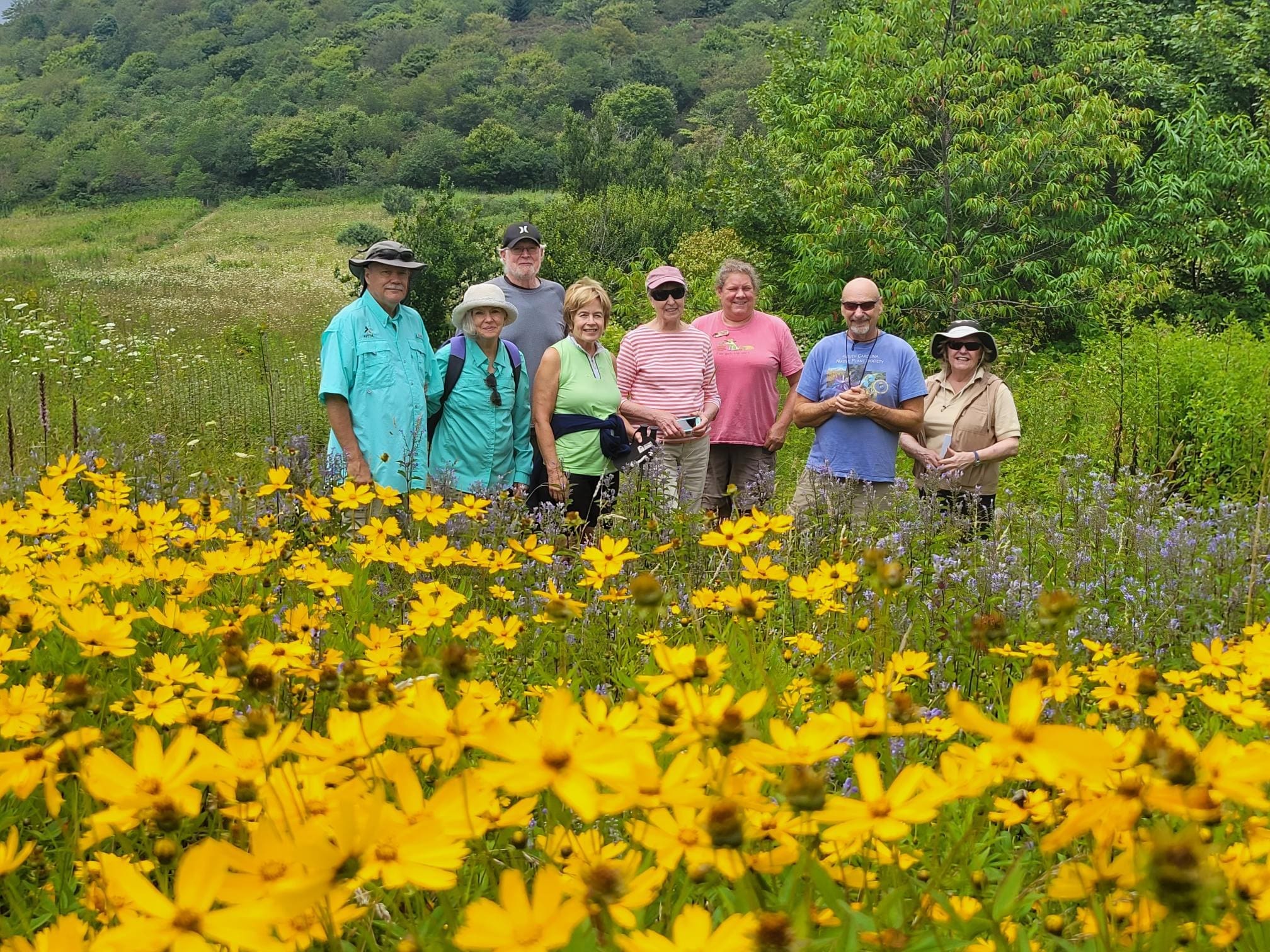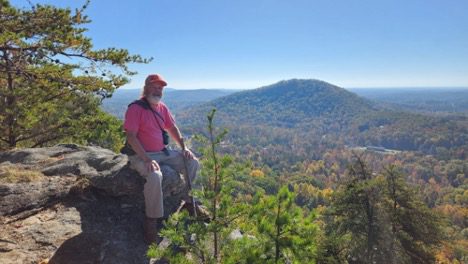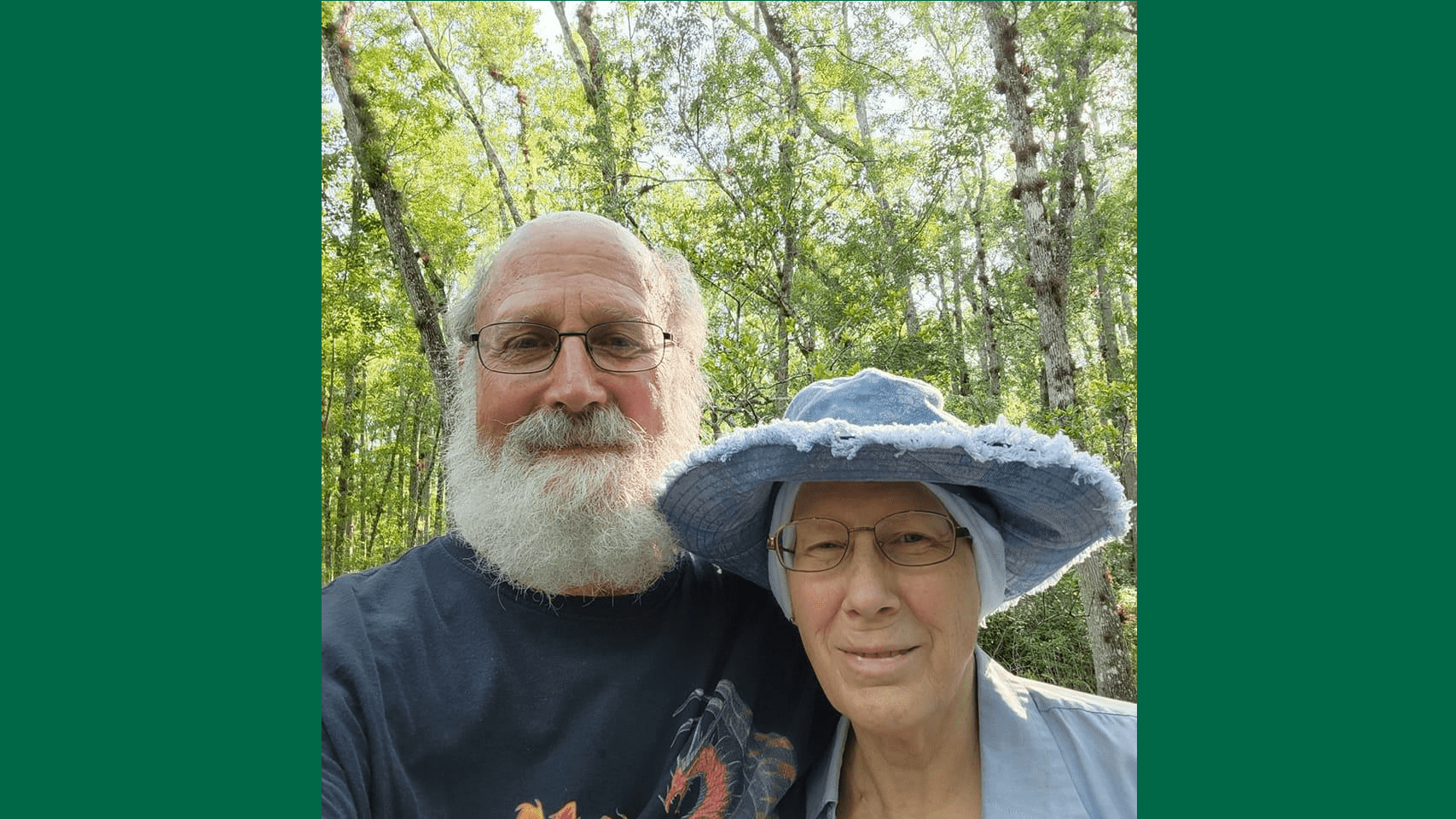Upstate Members Revel in Mid-August Blue Ridge Parkway Flora
Wildflowers, woodland treasures, drip ecosystem micro universe delight enthusiasts
By Janice Tuck
“Sometimes the best thing to say is ‘I don’t know’,” said native plant expert Rick Huffman, leaning in conspiratorially. We had eclipsed the mouth of Courthouse Road trailhead by only a few feet on the gravel road where 17 plant nerds milled about in dappled morning sun, gesturing with hiking poles, and outstretched fingers at various flora which adorn the Blue Ridge Parkway in August.
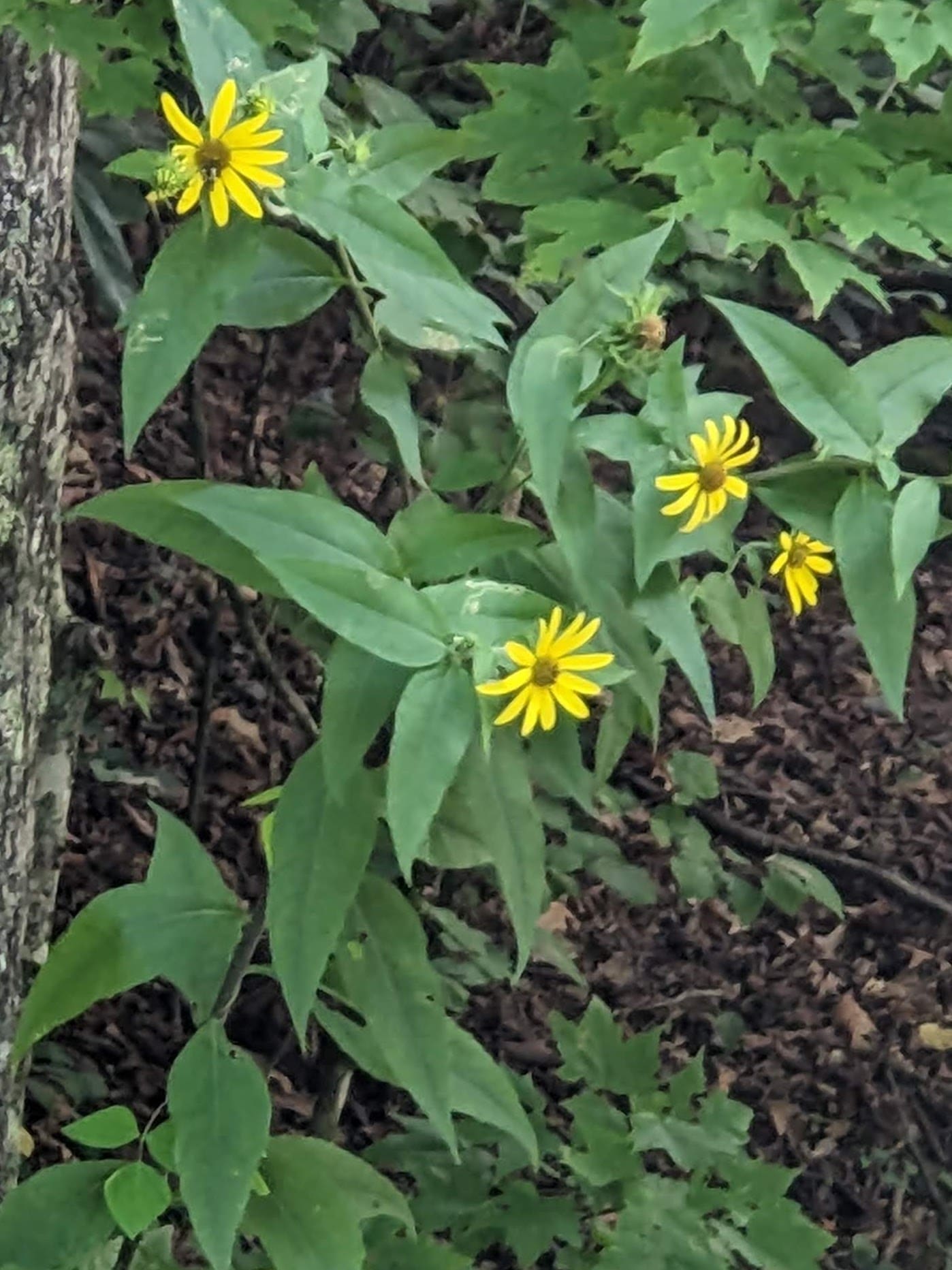
Woodland sunflowers grace the trailhead at Courthouse Road. Photo Credit: Janice Tuck
Six-foot tall woodland sunflowers, their pretty heads bobbing in the mountain breeze; sassafras whose three-toed leaf makes me think of a dinosaur footprint; rhododendron; native azaleas; woodland asters.
From the foliage bank he snapped a stem holding saw-toothed, football-shaped leaves “Any guesses as to what this is,” he polled the group. “Beech,” I said, thinking of that lovely caramel color they turn in winter yet continue to hang on until new growth pushes them off in spring. It was not a beech, but a serviceberry and the leaves were subcordate, a term I later learned from the other tour guide, Dan Whitten.
On up the gravel road a short piece, the loquacious Rick continued in his animated tone, plucking a stem of glossy, opposite-leafed foliage, sweet shrub aka “sweet boobie” as women have used the crushed flowers as well as the foliage to perfume their bosoms, he explained. It did have a delicately sweet aroma.
What looked like nickel-sized Shasta daisies — yellow-centered flowers with radiant, slender white petals — I learned are woodland asters. They dotted the path, meandering alongside the trail. One of the ladies told me she planted some in her woods, where they spread. I tucked that tidbit away in a corner of my mind – I have woods behind my house.
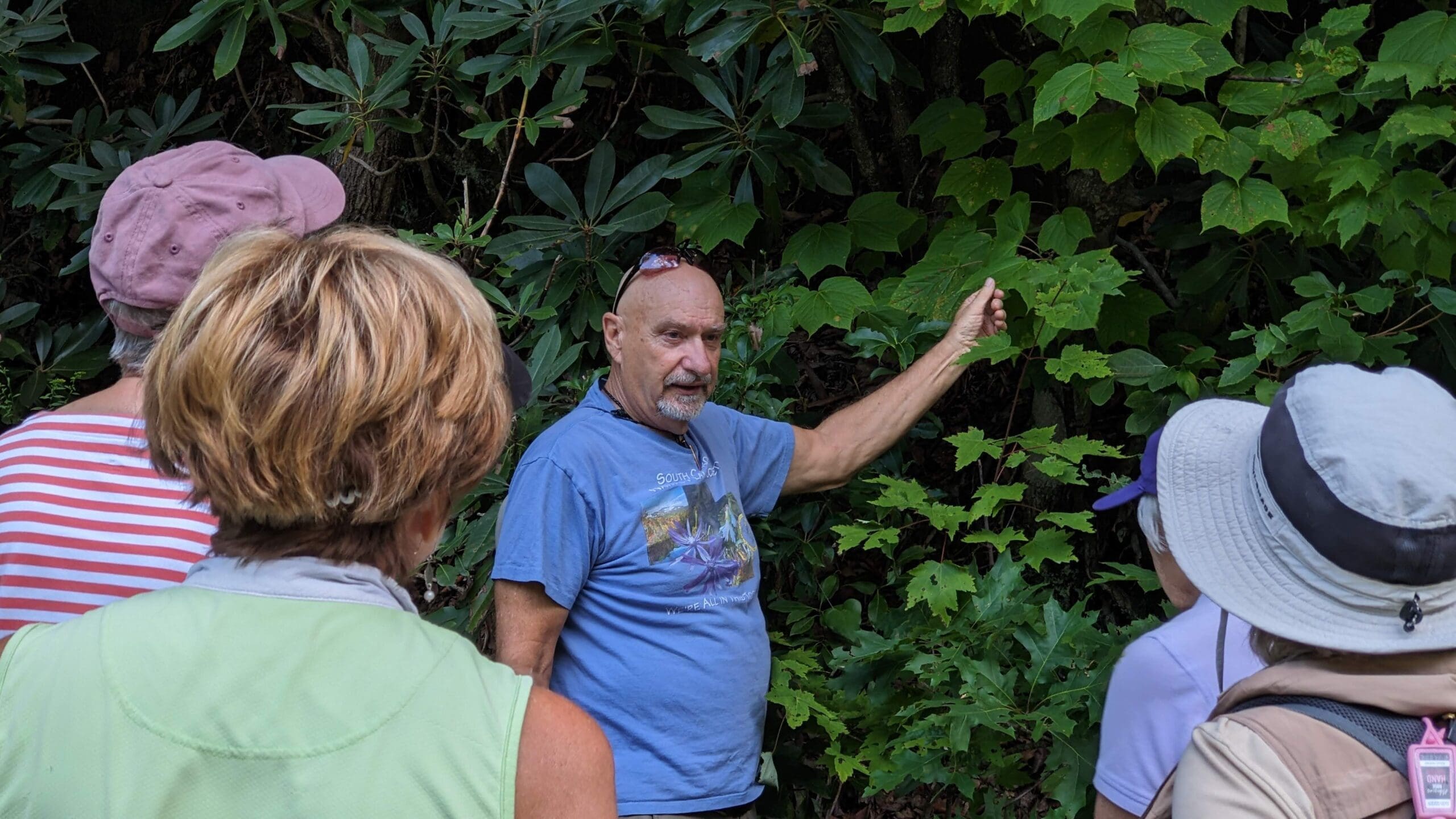
Native plant expert Rick Huffman discusses plant varieties as he leads a field trip on the Blue Ridge Parkway, August 16, 2024. Photo Credit: Janice Tuck
A stop at Wolf Mountain Overlook — where the spectacular mountain vistas were not the main attraction — had us scurrying across the highway and loitering on a very narrow curved shoulder to study the exquisite beauty and unique biodiversity of the drip ecosystem. With the constant trickle of water seeping from the rock face, an ecosystem of exotic and some rare species provide a living laboratory in which one could lose themselves for hours studying only a square foot.
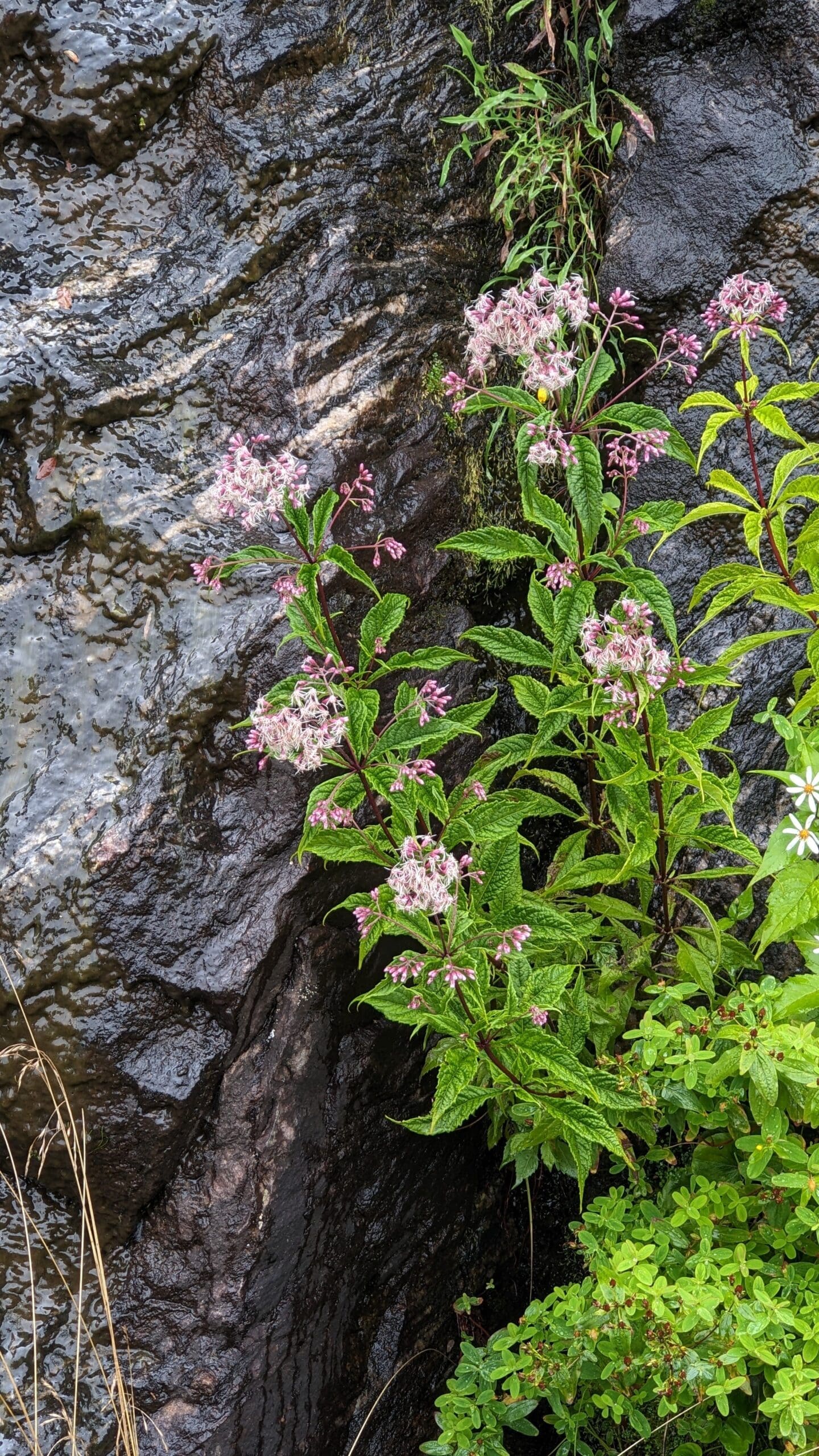
Joe Pye weed (Eutrochium fistulosum) shows vivid color in the ever-wet drip ecosystem. Photo Credit: Janice Tuck
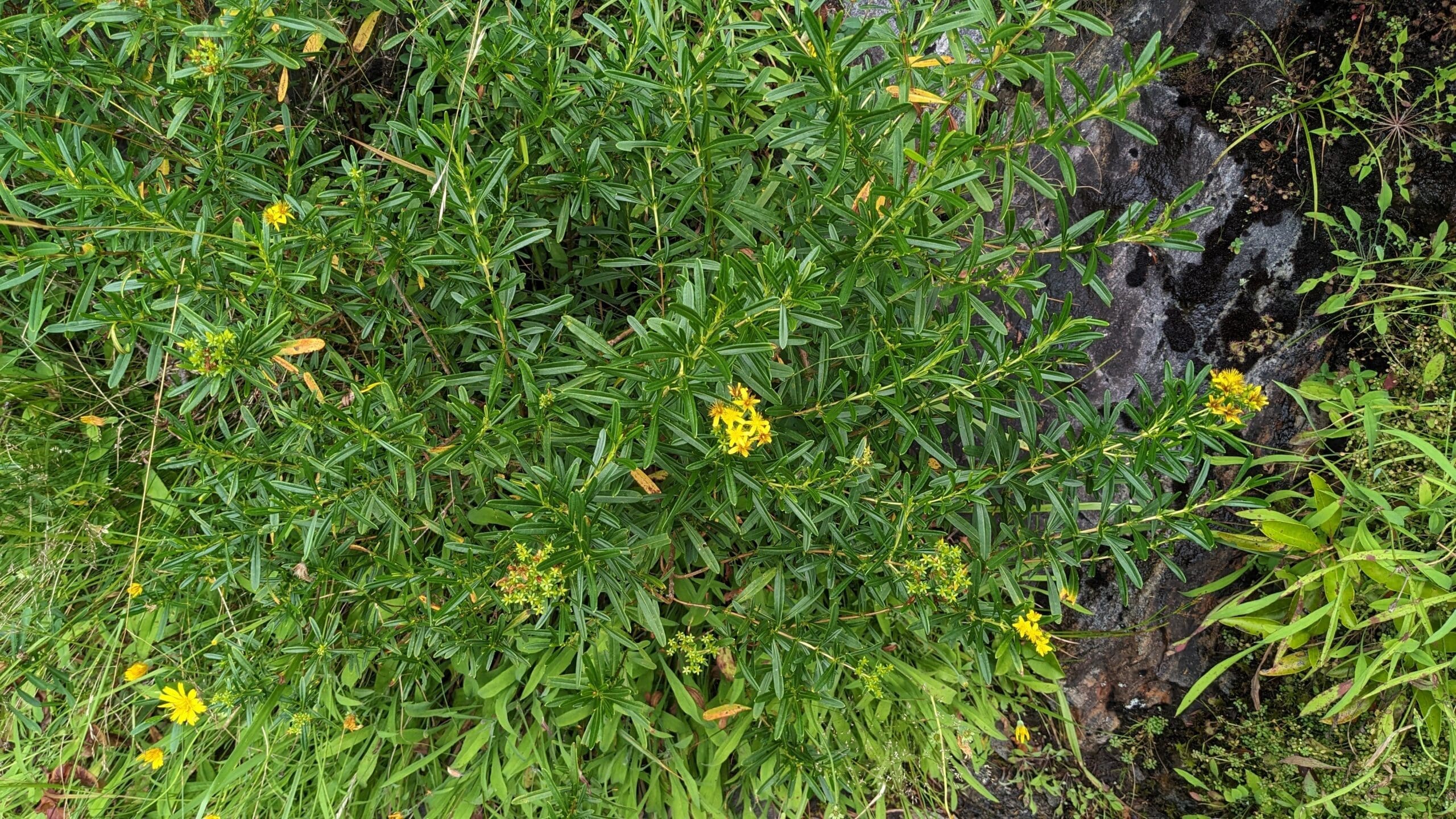
Bushy St. John’s wort growing in the drip ecosystem. Photo Credit: Janice Tuck
Lush bushy St. John’s wort (Hypericum densiflorum); vibrant pink baby Joe Pye weed (Eutrochium fistulosum); and so many others whose names I could not capture. I was captivated by grass-of-Parnassus (Parnassia asarifolia) with yellow-green leaves whose shape make me think of old metal tractor seats. From the base of many of the kidney-shaped leaves rose single stubby stems, punctuated by knotty buds which made me think of the spiked ball of medieval warfare. One flower had opened, a radiant five-petal bloom of Japanese pen and ink with striking dark veins against the white petals. Dan patiently spelled it out for me so I could input it in my phone. g-r-a-s-s hyphen o-f hyphen P-a-r-n-a-s-s-u-s. I’m not an efficient typist, especially on my phone, so this took a couple repetitions.
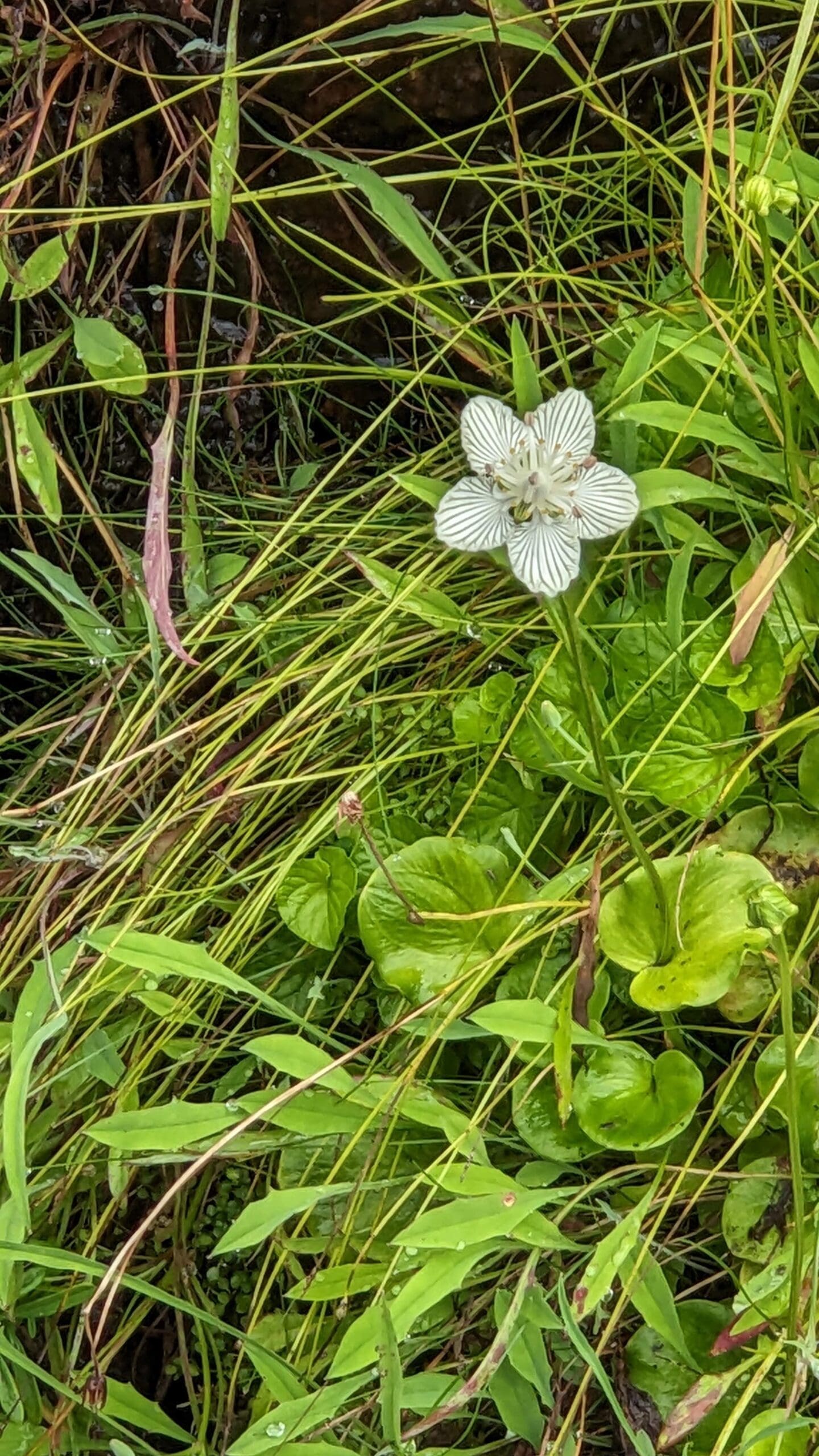
Grass-of-Parnassus (Parnassia asarifolia) in drip ecosystem. Photo Credit: Janice Tuck
There was much discussion of the mounding rust-colored carnivorous plant that bubbled from the wet crevices at eye level and above. The cascade of flora got thicker toward the base of the rock face, where over time more dirt had collected, Rick explained. I have never seen anything like it, though I, like so many tourists enamored by the panoramic view, have visited that spot on earth before but had my back to this enchanted micro universe.
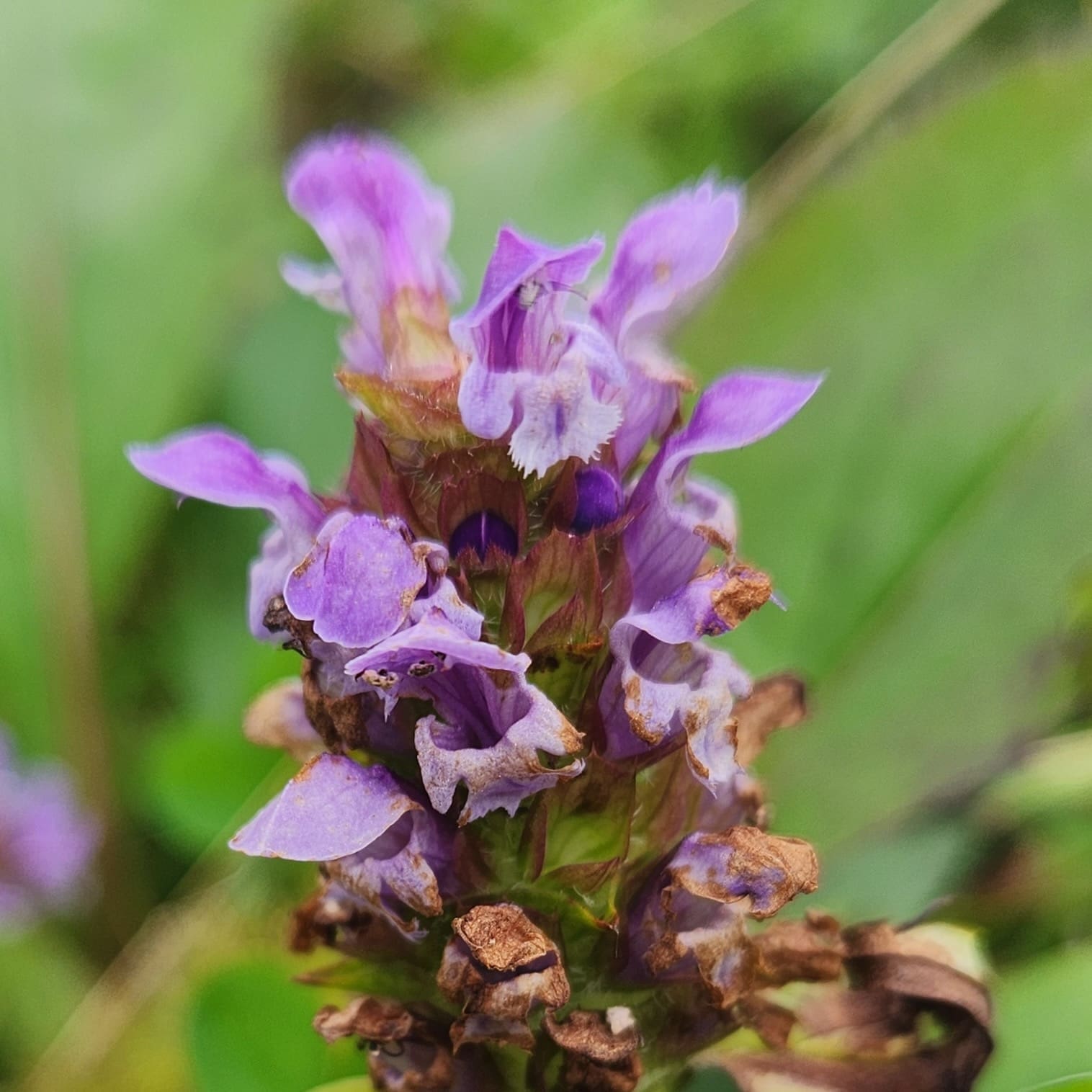
Close-up of heal all (Prunella vulgaris). Photo Credit: Dan Whitten
By the time we arrived at Sam’s Knob/Flat Laurel Loop trailhead parking area, my husband and I were famished. We had naively assumed that one of those “several stops” on the day-long Blue Ridge Parkway loop tour would be at a diner somewhere for lunch. We hadn’t packed nary a biscuit, piece of fruit nor wedge of cheese. We had assumed wrong. So, while the rest of the group picnicked under the pines, we went foraging for blackberries and found a few. Most were past their prime. This was August 16 so I was surprised to find any as, in Spartanburg, wild blackberries were past their prime before July 4.
After lunch, we set off on Sam’s Knob. What a beautiful trail, dotted with asters and mountain angelica (Angelica triquinata), mountain ash, viburnum, wild hydrangea, bush honeysuckle, and the occasional blackberry. The trail opened onto a clearing overlooking a meadow.
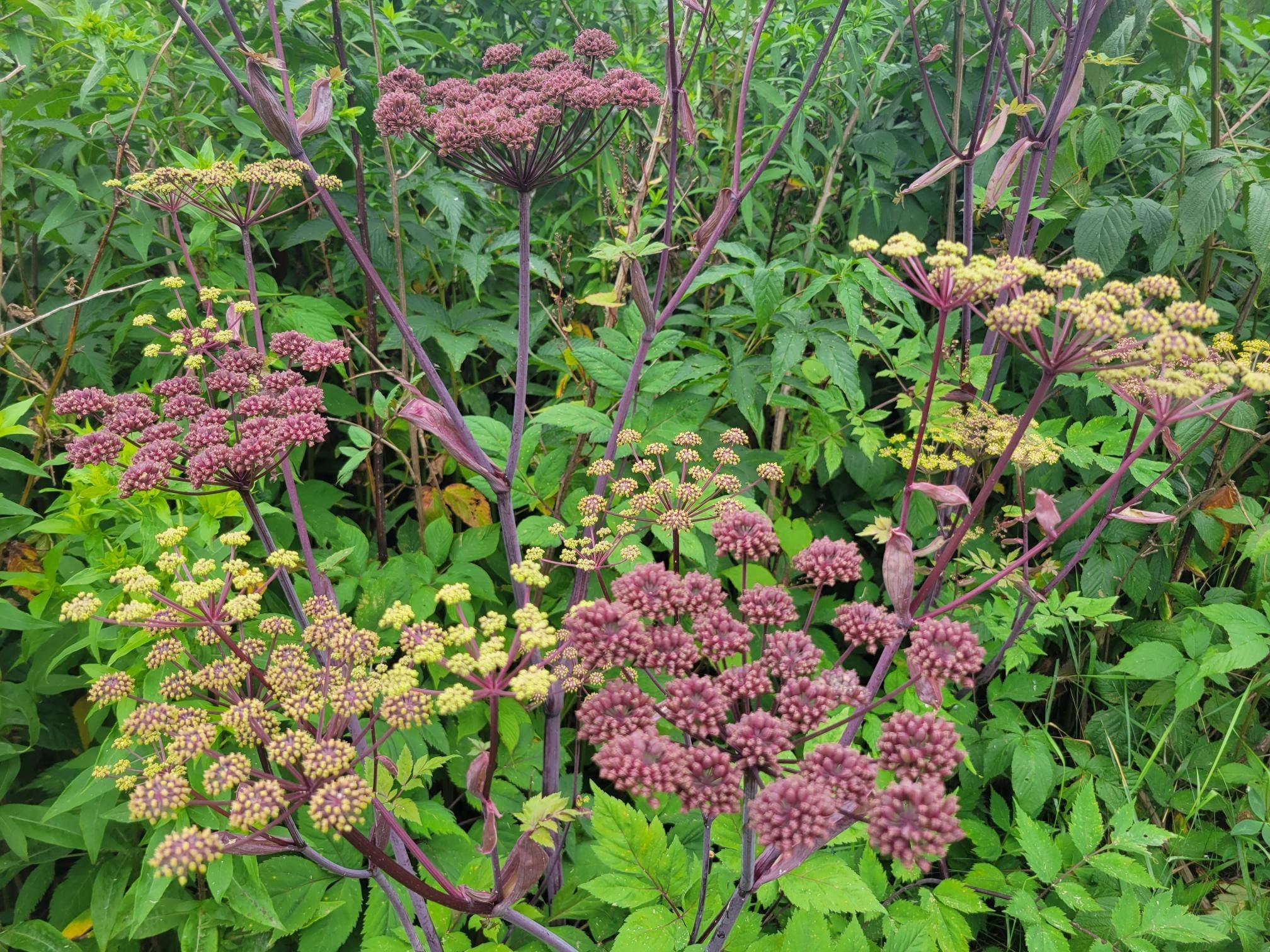
Angelica (Angelica triquinata) is common along the trails on the Blue Ridge Parkway. Photo Credit: Rick Huffman
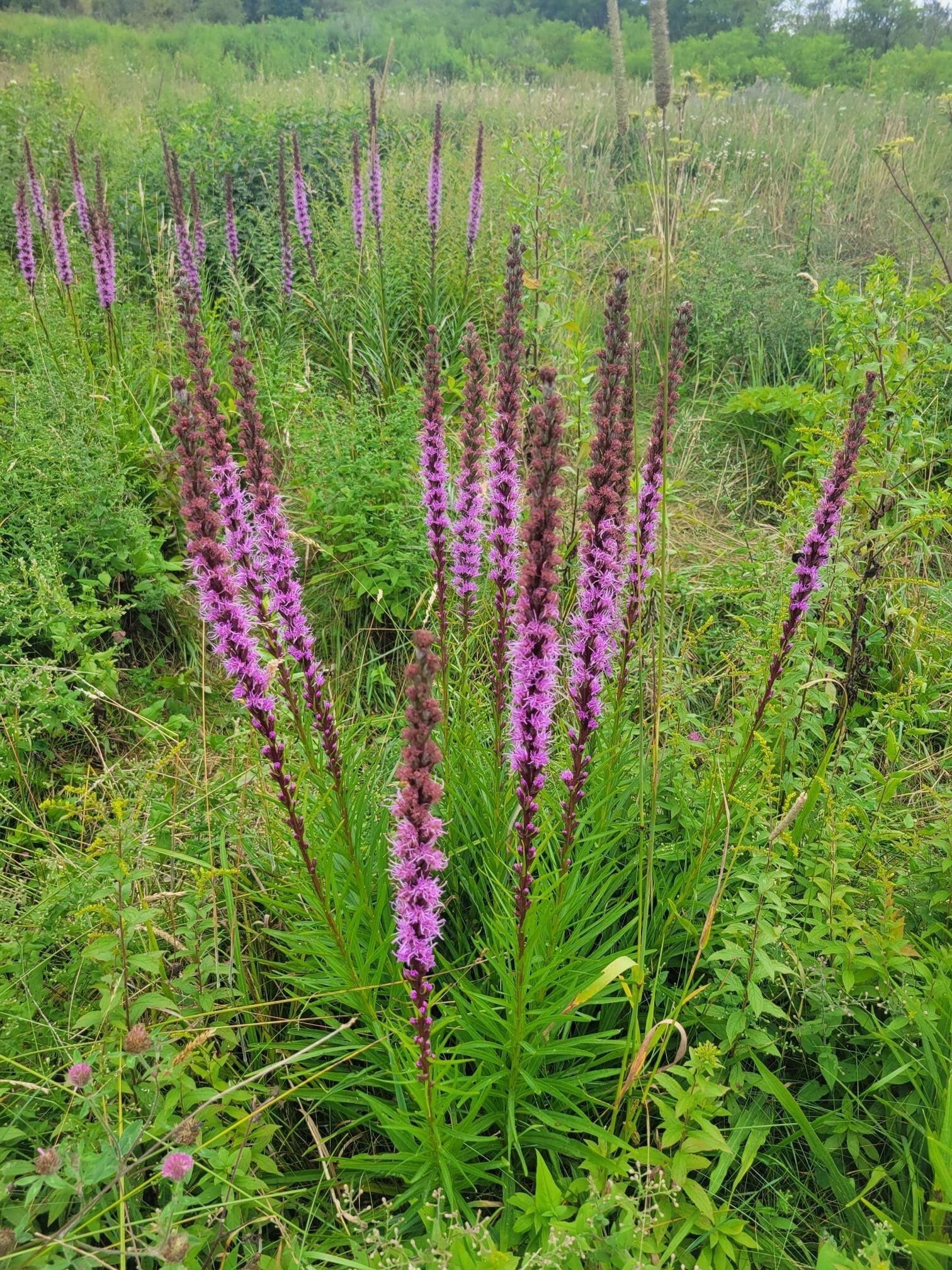
Gay feather (Liatris spicata) in the mountain meadow. Photo Credit: Rick Huffman
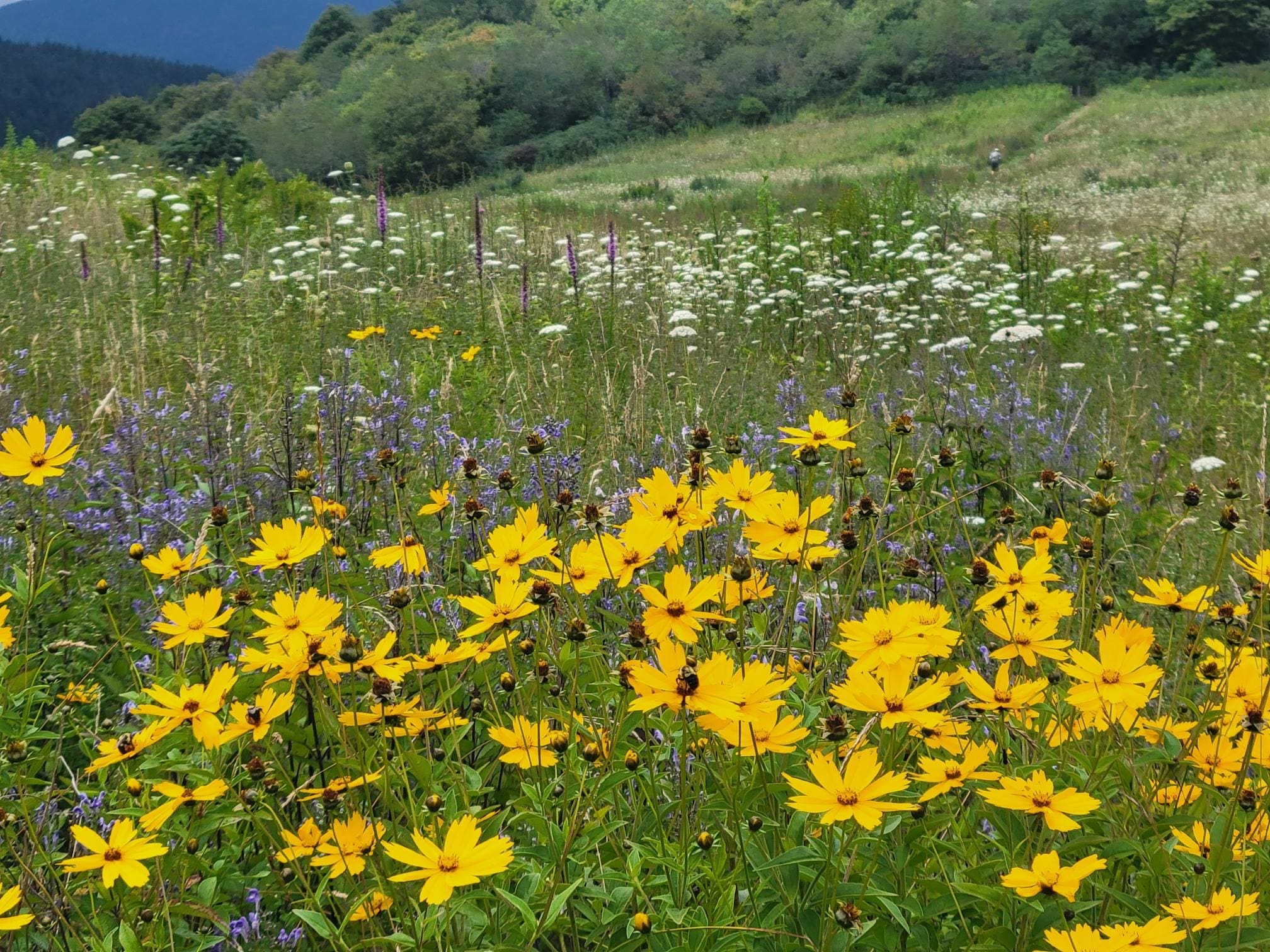
Mountain meadow flowers at Sam’s Knob: (foreground) lanceleaf coreopsis (Coreopsis lanceolata), blue flowers (Scutellaria incana); (background) gay feather (Liatris spicata) and Queen Anne’s lace. Photo Credit: Rick Huffman
Dan told the folktale of how indigenous maidens used love vine to reveal their fate: she plucked a flower from the love vine (Cuscuta gronovii) and tossed it over her shoulder. When she returned to the spot some days later, if the flower had rooted, her suitor was to be her mate.
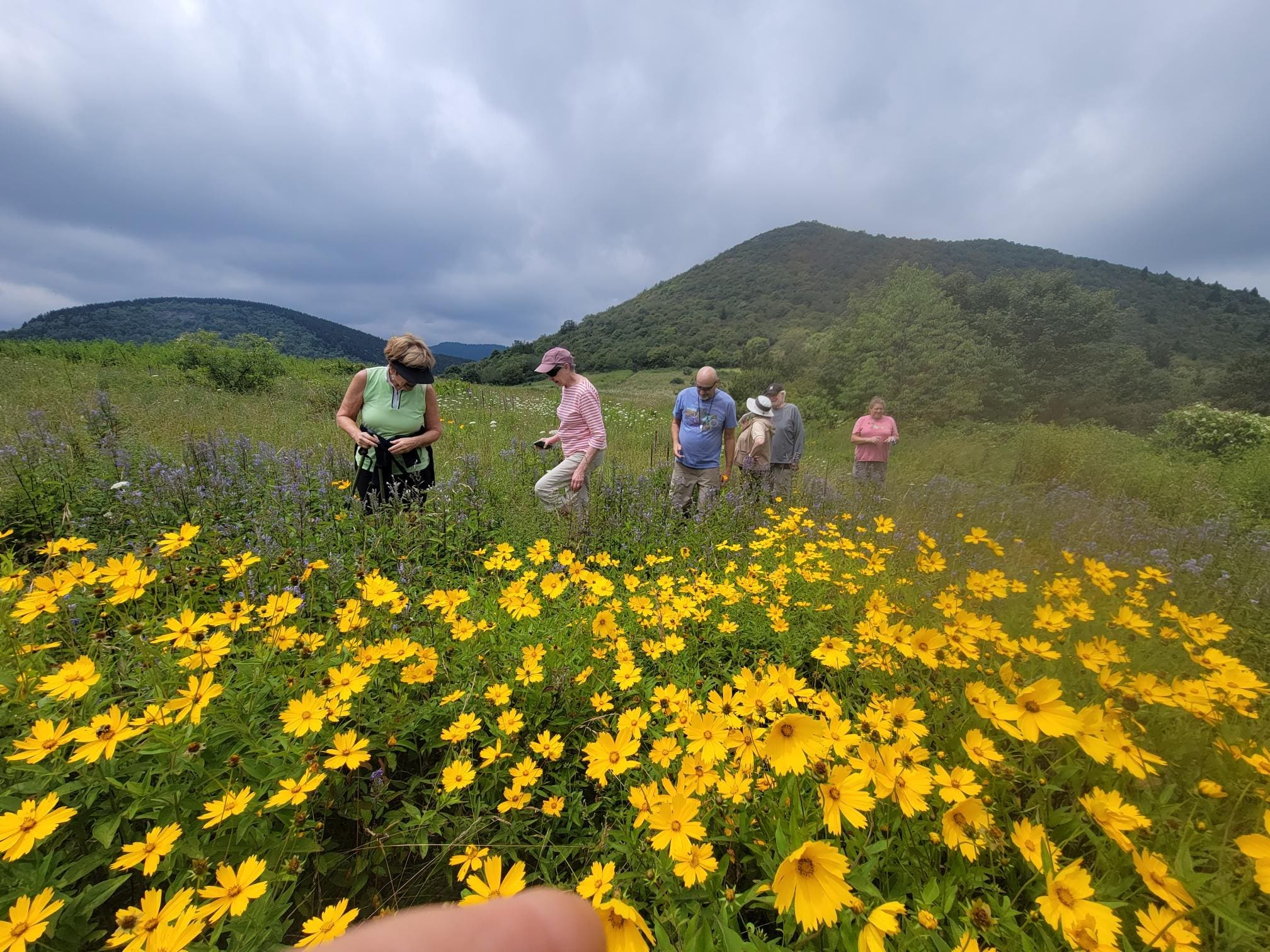
Native plant enthusiasts play in the mountain meadow. Photo Credit: Rick Huffman
On the walk back out, one of the ladies behind me said, “this is the most beautiful trail I’ve ever been on. All the wildflowers…” I agree.
“The fun thing is you learn something new every time you come,” Dan mused as we headed for home.
Dan and Rick will lead field trips at SCNPS Upstate 2024 Symposium: Solidago, Oct 18-19 at Table Rock State Park in Pickens. Also several of the plants mentioned can be purchased at our upcoming plant sale.

